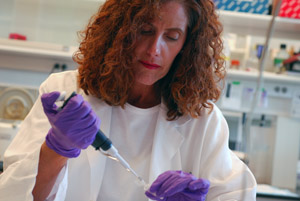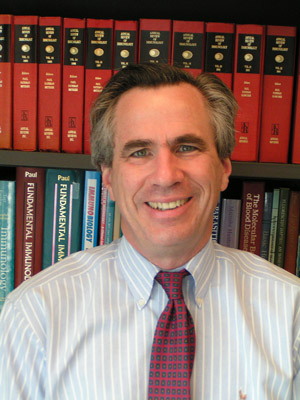 Dr. Janet SilicianoWriting in the December 2014 issue of the journal Nature Protocols, amfAR grantees Drs. Janet and Robert Siliciano and associates from Johns Hopkins University, along with a colleague at the National Taiwan University, succinctly summarize the major obstacle to developing a cure for HIV: “The focus of cure research has been on purging the latent reservoir.” These long-lived cells maintain HIV in a silent state, impervious to both the immune system and current anti-HIV medications. Scientists are examining strategies to shock the reservoirs into producing virus in the hope that they would then be susceptible to attack by the immune system.
Dr. Janet SilicianoWriting in the December 2014 issue of the journal Nature Protocols, amfAR grantees Drs. Janet and Robert Siliciano and associates from Johns Hopkins University, along with a colleague at the National Taiwan University, succinctly summarize the major obstacle to developing a cure for HIV: “The focus of cure research has been on purging the latent reservoir.” These long-lived cells maintain HIV in a silent state, impervious to both the immune system and current anti-HIV medications. Scientists are examining strategies to shock the reservoirs into producing virus in the hope that they would then be susceptible to attack by the immune system.
 Dr. Robert SilicianoThe Siliciano group describes their latest achievement in this line of research, a step-by-step method of producing T cells in the test tube that more closely resemble latently HIV-infected cells in the body. This system can then be used to screen novel compounds that might have the necessary “shock” activity sought by cure researchers.
Dr. Robert SilicianoThe Siliciano group describes their latest achievement in this line of research, a step-by-step method of producing T cells in the test tube that more closely resemble latently HIV-infected cells in the body. This system can then be used to screen novel compounds that might have the necessary “shock” activity sought by cure researchers.
Which brings us to a second paper published in the December 2014 issue of Virology. amfAR grantee Dr. John Young of the Salk Institute in La Jolla, CA, working with colleagues from the University of Wisconsin, the University of Utah, and the University of California-San Diego, explored the role of a chemical process known as sulfonation in the reactivation of latent HIV in infected CD4 T cells.
Using two standard chemical blockers of this sulfonation process, chlorate and guaiacol, Young and associates found that HIV reactivation was greatly inhibited in latently infected cells. They concluded that, “In this way, the sulfonation pathway may provide a novel target that could be used, in combination with other treatments, [in] a therapeutic strategy to cure HIV-1 infection.”
Dr. Laurence is amfAR’s senior scientific consultant